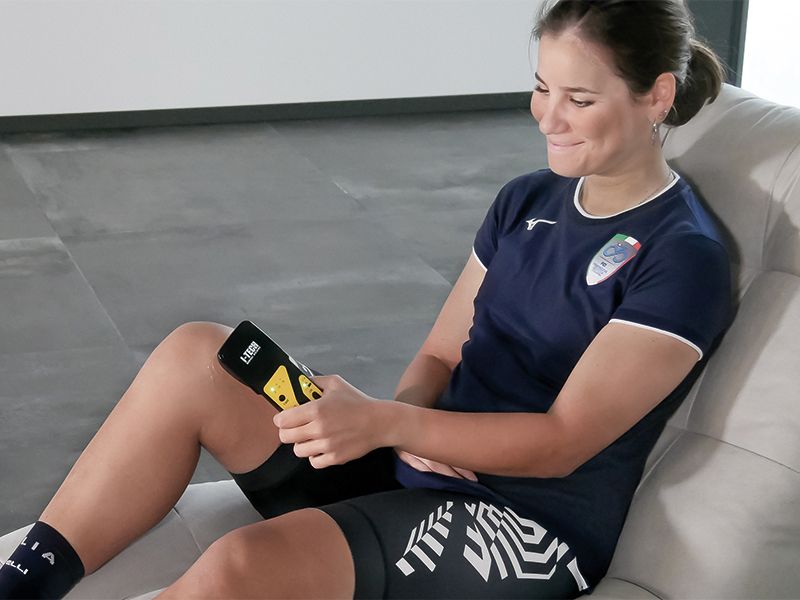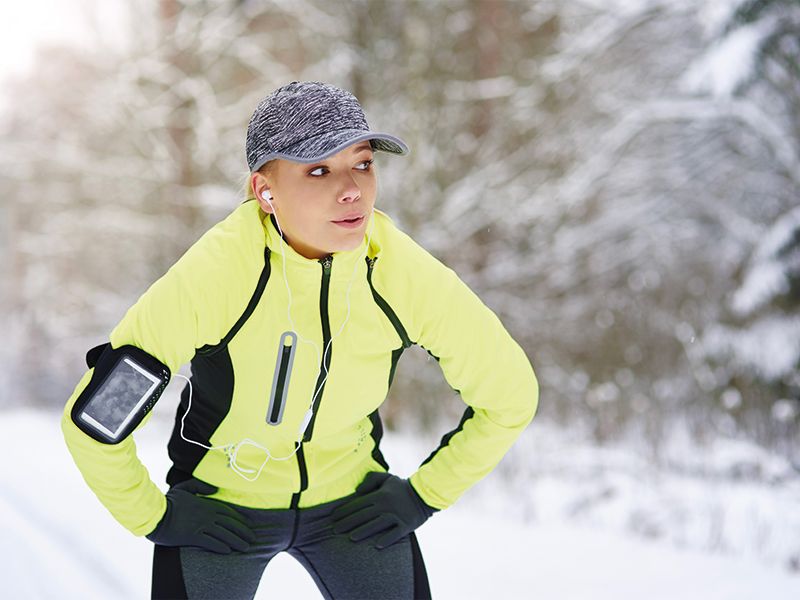Training in the cold involves a series of important systemic adaptations related to temperatures, including peripheral vasoconstriction, which is useful to reduce heat loss at the internal organs, which, among other things, can also cause problems in the superficial musculature. Vasoconstriction is an adaptation implemented by the body to reduce heat loss. It involves re-regulating the distribution of blood flow in various body districts, which is reduced to superficial and peripheral levels. As an effect of this remodulation, in some circumstances, some muscle districts may also experience lower vascularization, resulting in metabolic changes and increasing the risk of injury. Knowing these adaptations allows the athlete to adopt correct behaviors, optimize the conditions of training and post-workout recovery, maximize the effectiveness of sessions, adapt to the variation of climatic conditions, and be ready to face any situation in competition. For training to be effective, the recovery phase must be optimal in order to ensure the supercompensative effect, which is the basis of increased sports performance.
Both on a bike and in the water
In triathlon, heat loss becomes more significant due to air speed and the convective heat dissipation typical of water. A part of these problems can be effectively counterbalanced by the thermogenic effect of physical activity, but in the recovery phase, it is important to take into account all the parameters involved.
The intensity of physical activity, quantifiable in the percentage of VO2 Max, is an additional parameter to be taken into account since the greater the intensity of training the greater the body’s ability to maintain high temperature; in fact in this way the heat produced exceeds the dispersion induced by low ambient temperature.
It is also necessary to consider that a higher intensity of training also corresponds to a proportionately greater energy expenditure and increased mechanical stress, both muscular and articular, which would be good to balance with proper post-activity training.
The first thing to do
Once the physical activity is finished, before thinking about recovering from fatigue or mechanical stress induced by the activity, we must protect ourselves from heat loss. Moving quickly in a mild-temperature environment and replacing wet clothes with dry ones would be ideal. This little shrewdness, which may sound trivial is extremely important because it avoids that low temperatures cause the body to limit the dispersion of heat vessel forcing the peripheral vessels and reducing the blood flow even at the muscle level just when the muscles need to dispose of the catabolites produced during the activity.
Physical activity during the first phase
Once the temperature has stabilized, it is possible to begin cooling activities by performing specific exercises. It is my recommendation that the exercises and executions be personalized for individual athletes, as well as organized according to the specific discipline on which the training was focused or if a competition simulation was conducted. After finishing the established cooling routine, which can last only about ten minutes, you can continue the recovery phase with manual or instrumental activities depending on the availability and time available.
Valuable tools
The support of specific tools is useful to optimize time and effectiveness. The use of diathermy during the period immediately following the end of the training session and gymnastic cooling has considerable advantages, including significantly reducing the onset of D.O.M.S. and optimizing the local metabolic response. In this phase, the thermogenic effect induced by diathermy, as well as its effectiveness both in depth and on the surface, represents an optimal combination to balance the activity carried out at low temperatures.
Therefore, the combination of the biostimulant action induced by electric current combined with the thermal induced one thanks to the various modulation options represents the first choice in order to optimize the biological and tissue recovery after a low temperature training.
An alternative to diathermy is ultrasound: ultrasonic stimulation is able to trigger mechanisms similar to those obtained with diathermy.

The difference is that the action is induced not as an effect of an electric current, but by a mechanical stimulation mediated by high frequency sound waves. The effectiveness of the treatment with ultrasound, in fact, is not exclusively exploitable in case of injury, but with correct dosages has beneficial effects even at the muscle level: the stimulation induced by ultrasound, acting on peripheral vascularization, can trigger mechanically induced responses in depths similar to those that a manual treatment can initiate at a more superficial level. The effectiveness is not quantitatively analogous to that obtainable with diathermy, which has different characteristics, but this difference is partly offset by the portability of the instrument and the possibility of performing the treatment independently, therefore also daily.
Edit by Gianpaolo Boschetti

